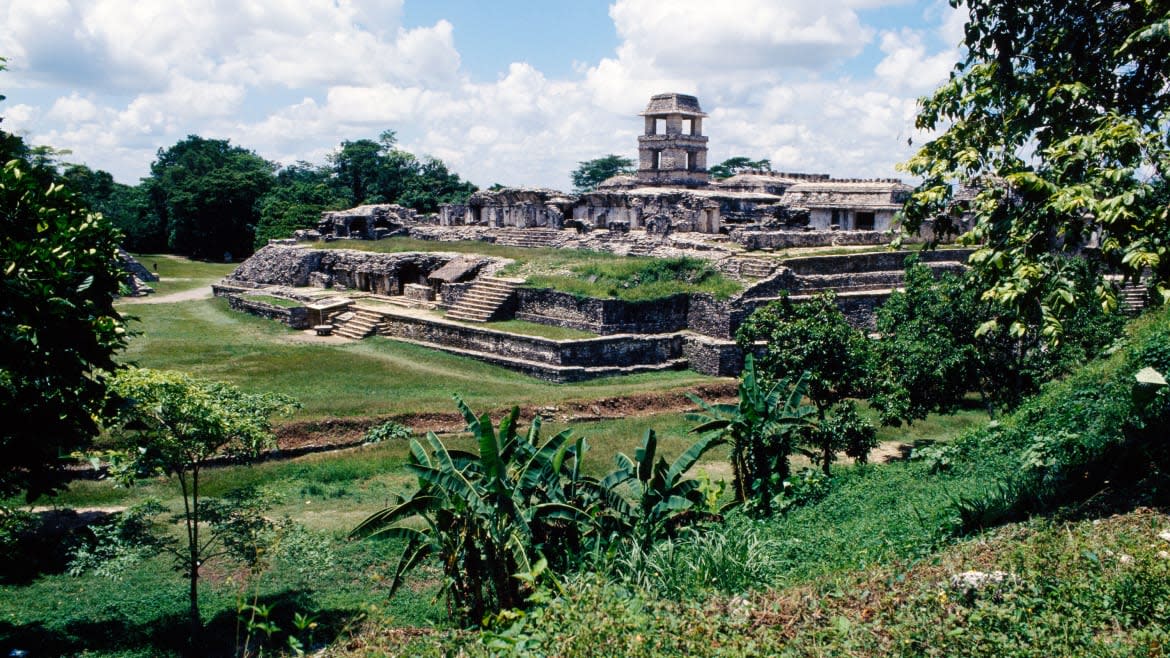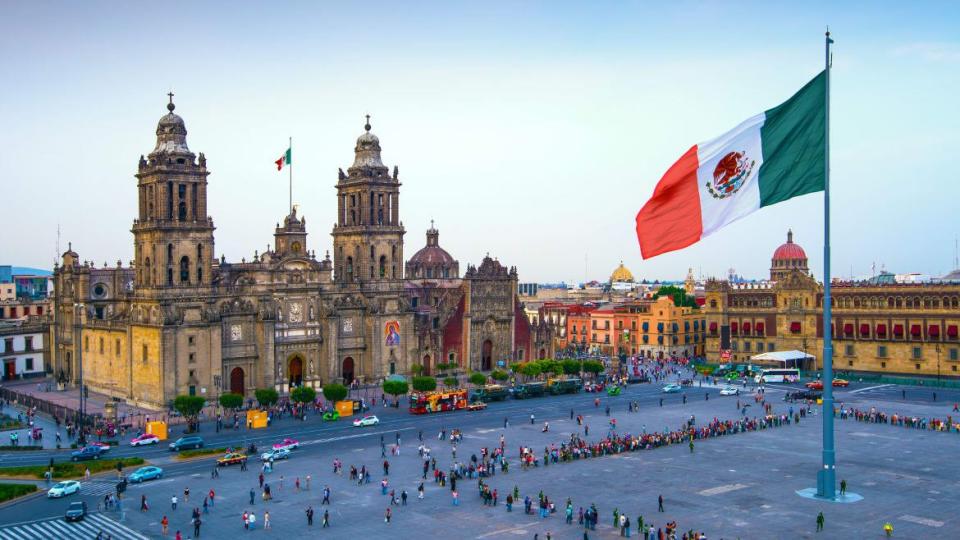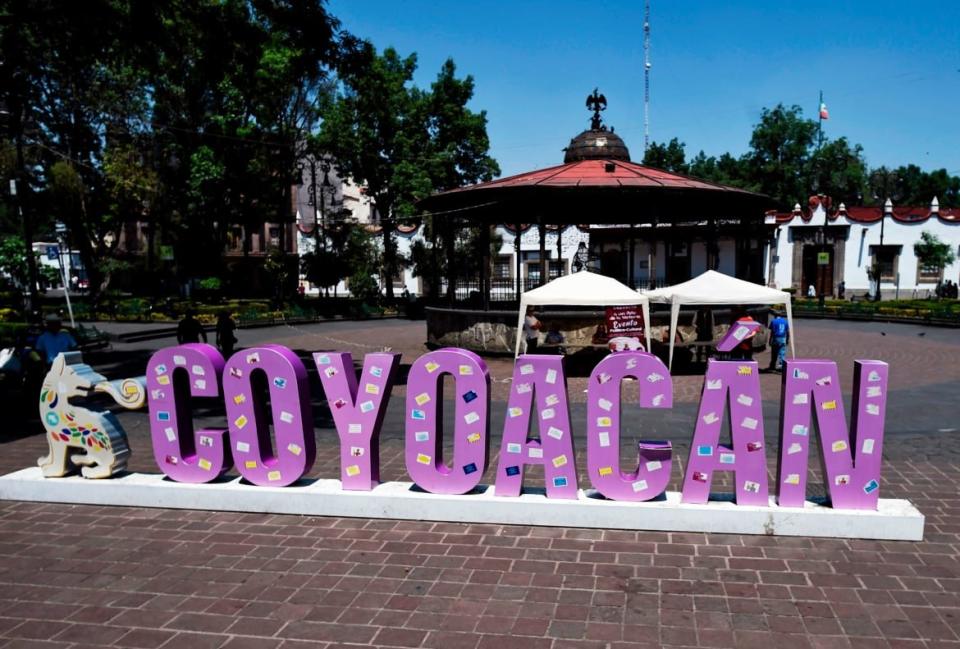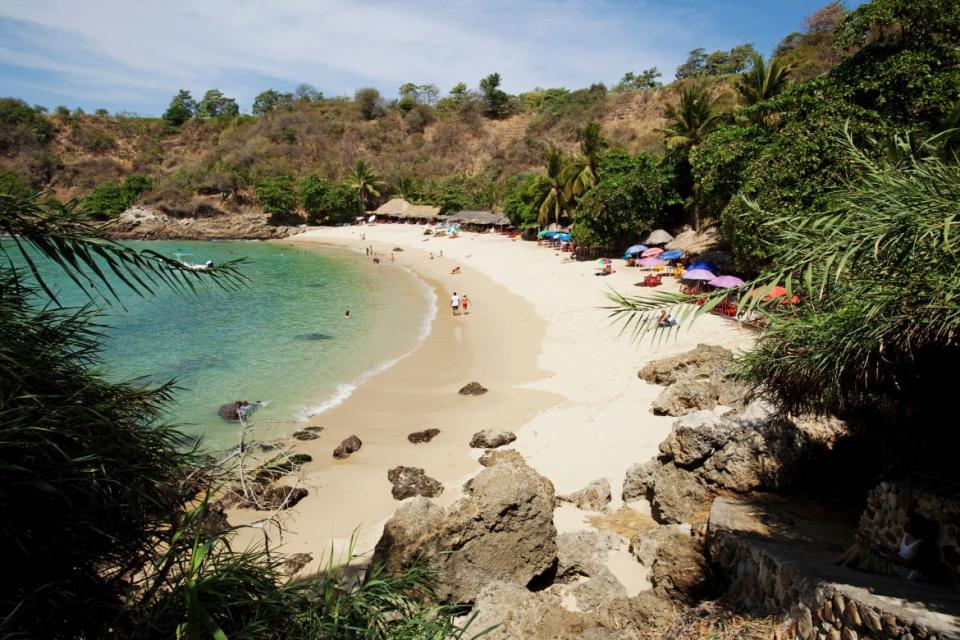What to Expect When Visiting Mexico During COVID Times

It was an experience few could claim to have had over the past decade as tourism to Mexico skyrocketed—the spectacular ruins of Palenque in Chiapas nearly to ourselves.
As November turns into December, though, many Americans are looking south, and attractions like Palenque won’t remain ghostly for long. According to numbers provided by the Mexican government, tens of thousands more people are flying in from the U.S. every month.
The borders have been open to U.S. tourism for months now, mainly out of necessity as the bizarrely austerity-conservative government of leftist president Andrés Manuel López Obrador meant that no bailout was coming for the tourism sector, a big part of the Mexican economy. While we’ve covered before what you should think about before you decide to come or not while the pandemic is ongoing, it’s also helpful to know what you’ll see on the ground.
In the few weeks I was in Mexico, I split my time between Mexico City and the Oaxaca coast. And while those two popular destinations may not be where you’re headed, what I found there was typical of what you’d see elsewhere, according to dozens of conversations I had with folks in the tourism business, other visitors, members of the government, and Mexican friends.
While there’s no testing requirement to enter Mexico, it’s still a good idea to get tested before you go. My flight from Dulles was a ghost flight (United Airlines bizarrely was charging nearly $500 one way for it, so I used points, as it was only 20,000 miles for business class. An odd business choice from their perspective given the empty plane, but what do I know?) Immigration was a breeze, which was a godsend as with the city’s growing popularity in recent years, the line could be endless. At Arrivals, the little 7-Eleven I always buy water at to guzzle because of the altitude was still there. So far, so easy.

The Mexican flag flies over the Zocalo, the main square in Mexico City. The Metropolitan Cathedral faces the square, also referred to as Constitution Square.
From the minute you exit the airport, however, it’s clear you’re not in the States anymore. Everybody is in masks—at all times unless eating or drinking. Impressively, in this diverse city of more than 20 million, when you walk down the street you will see no difference in compliance between the day laborer pushing cinder blocks in his wheelbarrow to the woman in a pantsuit leaving an office in the Centro. While more theater than effective, to enter any store or restaurant, you will have your temperature taken and wash your hands in disinfectant. Many shops and restaurants also have disinfectant mats for your shoes. In Ubers, the most popular and easiest form of transport, many drivers had plastic partitions put up and all drove with their windows down, taking advantage of the nice weather to add in more safety with fresh air.
Mexico Is Reopening Because It Has To. Should You Go?
The atmosphere in the capital is relatively normal for a big city, albeit more Mexican than in years past since there aren’t the flocks of foreign bobos filling up the sidewalks in Condesa or tour groups gazing at the beauty of the Centro. Hotel prices in the business areas of Reforma weren’t really cut-rate but in Condesa they were definitely lower than average and Airbnbs were guilt-inducingly low. Restaurants can be a mixed bag—often because of occupancy limits. Lardo was difficult to get a table at and Contramar near impossible as the afternoon went along. Pujol and Quintonil, two of the world’s best, were easy, however, as they’re more popular with tourists. But the relative emptiness meant I got to try a few newer restaurants that I enjoyed—Pigeon, Elly’s, Sonia, and Havre 77. At nearly every restaurant, waiters had not only face masks but also face shields. (Please tip, and consider tipping more than the 10 percent recommended by many online guides: 15 percent is a good starting point, especially considering service is pretty excellent in CDMX and the dollar is so strong.) Due to an uptick in cases and in preparation for a possible second wave, Mexico City has been changing restrictions on drinking and curfews, so it’s best to ask your hotel or Airbnb host for the latest information.
If you’re a first-time visitor to the city or one of its major museums is a big part of the reason you’re going, I’d reconsider, as one of the casualties of COVID here has been many of the museums, which have been temporarily closed.

Coyoacan neighbourhood in Mexico City
Otherwise, it was wonderful being back in one of my favorite cities. You can still wander the streets of Coyoacan, fantasizing about the magnificent homes hidden from you (occasionally getting lucky enough to catch a glimpse inside when a delivery is being made). I’m still discovering wonderful spots, like the scent shop, Xinú, which makes its products from herbs found in the Americas. The dogs are still lined up, impossibly well behaved, by their minders in the Parque Mexico.
And, yes, there’s still pollution, which was surprising given stories of how it diminished elsewhere around the globe.
On my flight to Puerto Escondido (I was fortunate enough to have a friend who flies his own plane and so we took off from Toluca and skirted around the mountains that ring Mexico City) it was an impossibly clear day, except over the city was a blanket of dark grey clouds, completely obscuring this megalopolis.
Despite having been to Oaxaca City, I’d never made it to its famed coast which is a haven for hippies and surfers and retains much of that vibe in a totally uncontrived manner. While not far as the crow flies, the coast and the capital are separated by a mountain range necessitating a drive of seven or eight hours.
The beaches here are well known for their surf (hosting numerous competitions), and the sound of the waves pounding the shoreline at the house near Zicatela where I stayed was unlike anywhere else I’ve ever been. And because the beach-able coastline here is so extensive, social distancing while enjoying some sand is easy.

Splendid isolation: the beach at Zicatela
But outside the main areas, there was certainly a whiff of desperation in the air. Everybody from our tour guide at the Tadao Ando masterpiece Casa Wabi to workers at the park in Palenque pleaded for us to tell people to come. At dinner at the normally popular hotel next door, Hotel Escondido, a nearly empty outdoor dining area at dinner was eerie. Near Palenque, the fabulous restaurant Restaurante Bajlum, which works on dishes coming from the wild (their wild tomato salsa was to die for), was empty save for us.
For those who are (for good reasons) extra cautious and afraid when it comes to COVID, I won’t pretend that Mexico was some sort of COVID-free paradise. Experts believe the official case count (which, while better than the U.S., is still not great) is inaccurate, and there’s a good chance you’ll run into a situation like I did on my flight back to Mexico City on a commercial airline: an overcrowded boarding area and a full plane.
But for those for whom trips to Mexico are a part of their lives—whether because of family, love, or whatever, I will say it felt magical to be back there. Just be cautious.
Get our top stories in your inbox every day. Sign up now!
Daily Beast Membership: Beast Inside goes deeper on the stories that matter to you. Learn more.

